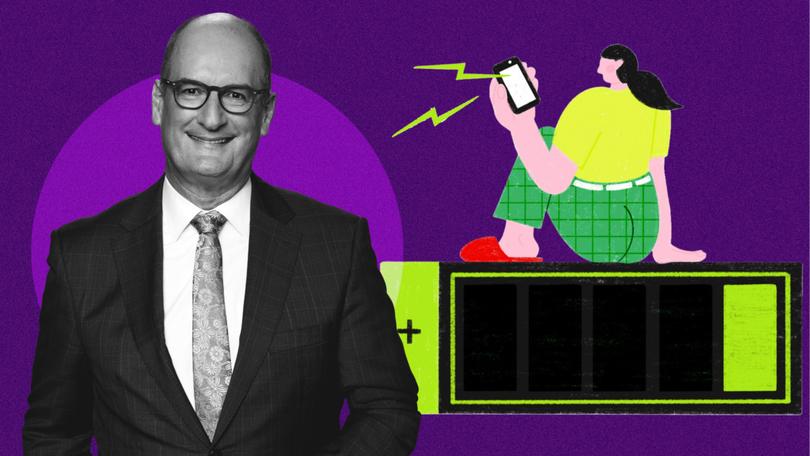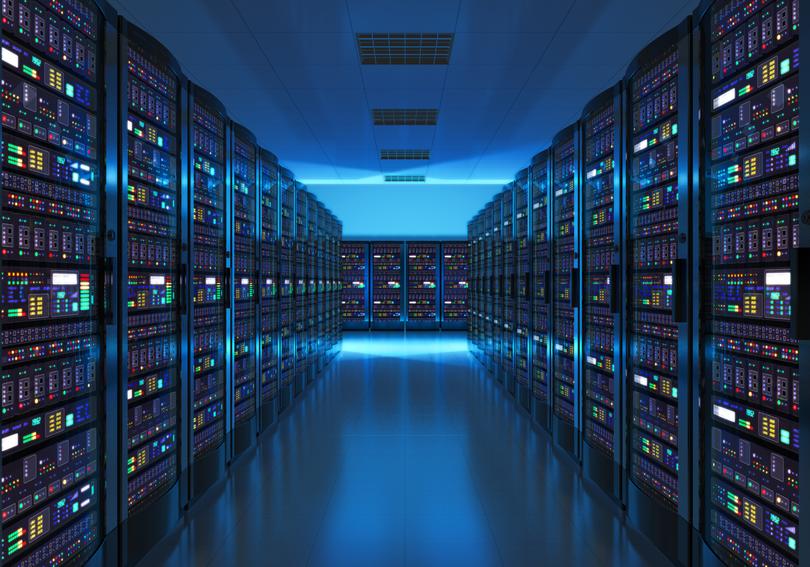DAVID KOCH: Our digital footprint is worse than flying when it comes to carbon emissions

Your mobile phone is at the centre of the political debate around the adoption of nuclear energy as policymakers try to solve the dilemma of transitioning to renewable energy while coping with a surge in demand for electricity and meeting carbon emission targets.
That mobile phone you use to shop online, Google search, check social media, store photos and operate ChatGPT is draining the power grid across the globe. As those grids are transitioning from fossil fuels to currently less reliable renewables to meet emissions targets, they are having to deal with energy-guzzling “dark data”.
Dark data is the processing of digital data from your phone, your desktop and at work. Digital processing is done at data centres. Massive complexes full of rows and rows of huge computers are draining power grids of electricity.
Sign up to The Nightly's newsletters.
Get the first look at the digital newspaper, curated daily stories and breaking headlines delivered to your inbox.
By continuing you agree to our Terms and Privacy Policy.Every time you shop online the processing is done at a data centre. The same with checking social media, storing files and photos in the “cloud” (the cloud is basically a data centre), working on emails, and the list goes on. It all goes through data centres.
We love it, it’s so convenient. But it’s increasingly causing blackouts in many countries during peak electricity usage times.
All the world’s data centre facilities currently use the same amount of electricity as Japan each year. Japan is the world’s fifth biggest energy user.
According to the World Economic Forum, while most climate change activists are focused on limiting emissions from the automotive, aviation and energy industries, the processing of digital data is responsible for 2.5 per cent of human-induced carbon dioxide. The aviation industry accounts for 2.1 per cent.

Our digital footprint is worse than flying when it comes to carbon emissions.
The WEF calculated that a single data-driven insurance, retail or banking business with 100 employees would produce a carbon footprint for a year which is equivalent to six flights from London to New York.
The scary thing is that it’s going to get a lot worse. According to the International Energy Agency, data centres have the potential to double their energy usage by 2026. Computing power and cooling are the two most energy-intensive processes within data centres.
Then there is the emerging artificial intelligence technology which is revolutionising the world. The biggest manufacturer of these AI computer chips is Nvidia which, for a moment, last week was the most valuable company in the world. Its share price has had a stellar run over the last year and is valued at more than every company listed on the Australian share market combined.
Their computer chips are being used to power things like ChatGP along with all the AI projects being announced by the likes of Microsoft and Apple.
But these new chips are such power guzzlers, that Ireland is limiting the import of Nvidia’s AI chips because of a fear it will cause blackouts during peak usage times. For example, the electricity demand for a typical search on OpenAI’s ChatGPT is 10 times more than a typical Google search. There are 9 billion Google searches a day.
The issue is that we’ve only just started using AI. The IEA predicts the AI industry’s energy consumption will increase tenfold by 2026.
And none of this includes the mining of cryptocurrencies. The mining of Bitcoin consumes just over half the amount of energy that all of Australia consumes in a year. And it will increase another 40 per cent in the next few years.
They are just staggering numbers. All our digital footprints are not only producing huge carbon emissions but also putting enormous strain on power generation.
That is the dilemma of policymakers. The transition from fossil fuels to renewables is tricky because the grid needs a reliable base load source of power to maintain consistency of supply and to cope with spikes during peak times usually coinciding with extremely hot or extremely cold weather. Meeting the spikes is the most expensive investment.
Over the generations, we’ve relied on coal and natural gas to provide that base load not only for us but grids around the world. We export 91 per cent of the coal we produce and 76 per cent of our natural gas. It has been a huge money earner for the nation and, along with iron ore, has underpinned the revenues coming into the Federal Budget.
The technology and reliability of renewable power generation is improving rapidly but there appears to be a gap before it can take the role of a base load provider. So traditional fuels have a role to play in the meantime.
Coal is certainly the dirtiest of the fossil fuels and, according to the predictions of the IEA, is the most likely to drop off significantly as an energy supplier.
The Coalition has triggered the debate for nuclear power. It is a legitimate source of energy but not without safety issues and political sensitivities around where plants will be built.
It’s a good debate to have, but isn’t natural gas the most obvious source for Australia? It’s much cleaner than oil and coal and we’re a major global producer.
Natural gas seems to be the perfect base load stop-gap energy supply if we don’t have the appetite for nuclear.
